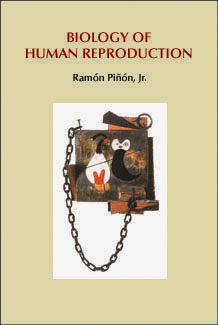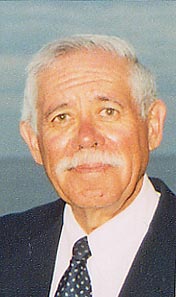
Biology of Human Reproduction
By capturing the latest developments in this dynamic field--including cloning, embryonic stem cells, and assisted reproduction--Ramón Piñón has made sure that his textbook is the most up-to-date and useful introduction to human reproductive biology available.
Summary
By capturing the latest developments in this dynamic field–including cloning, embryonic stem cells, and assisted reproduction–Ramón Piñón has made sure that his textbook is the most up-to-date and useful introduction to human reproductive biology available. This book, developed from the author’s course notes at UC San Diego, is designed as an introductory text for non-science majors. Although its emphasis is on biology, it combines a rich assortment of comparative historical and literary notes with a contemporary inquiry into human sexuality. It may also serve as an intermediate-level text for non-science majors, or an introductory text for students of biology.
Table of Contents
- The Study of Human Reproduction
- Sex, Reproduction, and Mutation
- Reproductive Hormones
- Sex Determination and Fetal Sexual Differentiation
- The Ovary: The Ovulatory and Menstrual Cycles
- The Testis and Testicular Function
- The Brain and Reproduction
- Puberty
- Stress and Reproduction
- Aging and Reproduction
- Fertilization and Implantation
- Placentation, Parturition, and Lactation
- Fetal Loss and Birth Defects
- Disorders of Sexual Development
- Artificial Control of Fertility
- Infertility and Assisted Reproduction
- Sexually Transmitted Diseases
- Cancers of the Reproductive Tissues
- The Biology of Human Sexuality
- Human Embryo Research
List of Abbreviations
Glossary
Index
Preface
This text has developed out of my teaching human reproduction for a number of years at two levels, an advanced level for biology majors and an introductory-intermediate level for nonscience students. I first taught human reproduction in the winter quarter of 1973. The field has changed immensely since then. Indeed, most of the information presented in this book was unknown then. The field has matured enormously, and there is now a large body of information about human reproduction that is available to the experts, but which has not yet made its way into the public consciousness. I take it for granted that most people are interested in reproduction, but the complexity of the field may discourage many from tackling it seriously.
The present text is intended for nonscience majors, which means simply that an extensive background in biology is not presumed. Nevertheless, this is not a text for the completely naive. I do assume that all students have acquired a certain level of knowledge about biology (and perhaps reproduction) either in high school, at the university, or through their own reading. Indeed, my experience has been that many college-level students, perhaps because of the inherent interest of the subject, have done a certain amount of reading on their own. I am mindful that many students might find some parts of the text rough going. Nevertheless, my experience has been that a willingness to tackle a complex subject, to think analytically and critically, and to ask questions and not be dismayed with incomplete or unsatisfactory answers is perhaps the most important prerequisite for the course.
My objective is to provide a systematic overview of the biology of human reproduction at what might be called an intermediate level, that is, beyond what is generally covered in introductory general biology texts. This means that we will explore many aspects of human reproduction in a rather detailed way. The material is not necessarily easy, but I believe it is always interesting. An overview of the scope of the text is provided in Chapter 1. As will be evident, the study of human reproduction is a multi-disciplinary endeavor bringing together several different fields of research. The spectrum of topics in the text covers essentially the entire range of studies of human reproduction. I have ordered the topics in what I think is a logical manner, but I recognize that not all instructors will agree with me. The first eight chapters form the central core of the material and focus on the anatomy, physiology, and endocrinology of the reproductive system. The remaining chapters explore other aspects human reproduction. They can be covered in whatever order fits best with the instructor’s overall plan. The focus of the text is biology, but I have ventured into what to me is the uncharted territory of human sexuality in Chapter 19. Here I have limited my discussion to the little that we know about the biological basis of a few selected aspects of human sexuality.
Throughout the text I have sought to emphasize the experimental, observational, clinical findings that form the basis of our understanding of the different aspects of human reproduction. These are presented often in the form of tables or graphs that have been taken directly from the published literature. The level of coverage varies from introductory to intermediate, and perhaps advanced in some cases. For a few topics I have also provided a short historical perspective that I hope may add to an appreciation of how our understanding has developed. I have also tried to conform (with only two exceptions) to new recommendations for anatomical terminology that avoid the use of eponymous terms. In addition, except in a few instances, I have avoided mentioning the names of scientists and clinicians associated with the experiments and observations that are mentioned. The works that provided illustrations or graphs are cited in the readings at the end of chapters, or in the legends to the figures or tables. It has not been my intent to provide in this text a comprehensive review in which all contributions are cited. I felt that a text of this type should focus more properly on ideas and insight. The bibliography at the end of each chapter is divided into a general reading list, and a list of journal articles that provide more detailed experimental or clinical findings.
I am hopeful that both students and instructors will find something of value in the text. For instructors, I think the text can accommodate itself to different teaching styles and approaches. I have also included questions at the end of each chapter that I hope will engage and develop the reader’s understanding of the material. Topics that can be explored in more detail through library research are included as well. For the nonscience student, I hope that the text will form the foundation on which he or she can continue to build after leaving the university.
Acknowledgments
I wish to acknowledge the encouragement that my friend, Dr. Vernon Avila, provided in the early stages of writing. He graciously read a number of chapters of the first draft of the text. The comments and encouragement of various reviewers are greatly appreciated. I have tried to incorporate many of their suggestions. Special thanks are due Drs. Gregory Erickson, Kenneth Jones, Oliver Jones, Linda Olson, and Dorothy Hollingsworth from the UCSD School of Medicine for providing me with figures that appear in the text, Dr. A. H. Holstein, University of Hamburg, who graciously gave me permission to reprint the scanning electron micrographs of spermatogenesis, and Dr. S. D Gilman, University of Chicago, for the Chapter 17 cover art. The friendly reception and encouragement that Bruce Armbruster and Jane Ellis at University Science Books gave me when presented with the first draft of the text is greatly appreciated. Jackie Vignes deserves special thanks for her unfailing patience and courtesy in helping me prepare the several versions of the text that I have used in my teaching.
San Diego, CA
Reviews
“Well written and very readable.”
-Choice
“Pinon has a deeper, wider, richer approach than the competing textbooks.”
-Morris Barenfus, University of California at Santa Cruz
“Its comprehensive coverage of the topics includes up-to-the-minute science and historical perspectives, all written at a level that is appropriate for the nonscientist.”
-Laura Grabel, Wesleyan University

